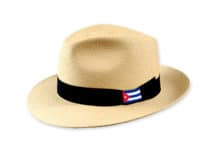
Contents
Irreplaceable Cuban coffee to start a new day.
For the vast majority of Cubans, a cup of freshly brewed coffee in the morning is irreplaceable to start a new day.
Some prefer to drink it neat, others with milk, and there are those who prefer to drink it less concentrated or clear, as it is known on the island along with bread.
In most Cuban homes, coffee is made in a coffee pot, although there are still those in both the countryside and the city who strain it in steep or strainers, which is an old tradition in the country.
That way of doing it is with a fabric funnel in the shape of an elongated bag, the coffee powder is placed there and boiling water is added, which falls into a container that is placed below.
If you want it stronger, repeat the operation but instead of adding water, add the same coffee that is already in the container.
For the natives of that island there is no specific time to have a good drink or a little cup of coffee, it can be in the morning, after meals, in meetings, to talk with friends or simply if any visitor comes home.
Something very peculiar, especially in rural areas, is that the coffee is processed in the same homes.
After harvesting, the cherry trees are pulped, dried in the sun, cleaned and the wood stove is assembled for roasting in a cauldron where a special smell is released that can be perceived from meters away.
There are those who prefer to brown it alone and others already accompanied by brown sugar.
The truth is that when it is well browned it is ground and ready for the coffee pot or strainer where aluminum cups or jars wait for lovers of this drink to fully enjoy it.
History of coffee in Cuba
For some scholars of the subject, there is no single or definitive version of how the first coffee beans arrived in Cuba.
Some refer that they arrived from Puerto Rico around 1770, others state that it was about twenty years before by the hand of a merchant from Havana named José Antonio Gelabert who transferred it from the current Dominican Republic.
Other versions say that it was introduced into the country by the French who emigrated there when the Haitian Revolution became evident.
By the end of the century, this plantation had reached an expansion in the country, especially on the lands of wealthy people, thus positioning itself as one of the main products of commerce.
Little by little, with the influence of Dominicans who arrived in the country, this crop and its sale were further developed until it was consolidated, and it is currently one of the exportable lines from Cuba to the world with recognized quality and preference.
For the first decade of 1800, some statistics show the existence of about 80 coffee plantations already in the west of the country, together with as many in the east.
In the following years, coffee began to be exported from Havana and in an average of approximately 20 years, the number of arrobas sold in the world increased considerably from 50,000 at the beginning to nearly 1,500,000.
The successful cultivation of this plant in Cuba and the quality of its fruits have much to do with the climatic conditions of the country and the characteristics of its vegetation and nature.
To this is added the experience already achieved by coffee growers and the tradition of planting, caring for and cultivating these plantations so that natives and foreigners who like it have it every morning when they wake up.
Still in Cuba, the ruins of some places where very productive coffee plantations were found are preserved as an important and palpable part of its history.
Of the most outstanding, we can mention those of Terrazas de Pinar del Río in the West and in the eastern region Santiago de Cuba has La Isabelica.
Some of these old haciendas have been declared a World Heritage Site by UNESCO.
Varieties of Cuban coffee.
In Cuba, the Arabian species is mainly cultivated with a dozen varieties, although this is the most exported due to its quality, Robusta also has several plantations on the island since it is more resistant.
Some of the Cuban coffee brands that are preferred by those who consume it in Cuba or abroad are the world-renowned Cubita, as well as Turquino, Extra Turquino, Hola, Serrano, Crystal Mountain and others.







